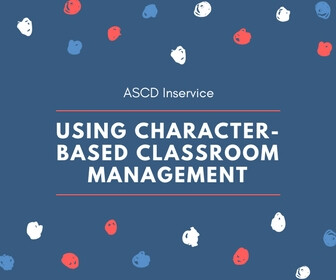When I began teaching 3rd grade, my assessments included observing, conferencing, designing investigations, giving quizzes and tests, and administering required standardized tests. While some of these assessments were useful in improving student learning because I could immediately determine what students did or did not know and take action on what they needed next, I often ignored results I couldn’t immediately use because all I had was an overall score or grade for the assignment. In those cases, I just moved on—assessment evidence from selecting the correct multiple-choice answer or completing a memorized routine told me little about a student’s ability to transfer learning to a new situation.
It took me several years to deepen my understanding of what makes an assessment “actionable” and how best to use assessment results. My shift in perspective was due, in part, to taking graduate courses in more complex approaches like differentiated instruction and student-designed investigations. To make a long story short, I learned that the most important use of assessment wasn’t simply for grading but for getting feedback to support the learning of each student.
I learned that the most important use of assessment wasn’t simply for grading but for getting feedback to support the learning of each student.
In my book Rigor by Design, Not Chance: Deeper Thinking Through Actionable Instruction and Assessment, I detail why “actionable” assessments are critical to continually advancing student learning while empowering learners. Such assessment evidence serves three key functions:
- Assessment questions and tasks “uncover” what the student is thinking, not simply what the student memorizes.
- Assessment evidence can be interpreted in terms of where a student is “right now” along a learning continuum, making progress monitoring transparent to students (for example, through student self-assessment tools).
- Assessment evidence can be used to provide feedback to students that promotes agency and self-reflection skills to help them better understand not only the content they are learning, but who they are as learners.
The Actionable Assessment Cycle
Actionable assessment is most powerful when used as part of a cycle. As shown in the figure below, an actionable assessment cycle that consists of establishing a series of increasingly more complex learning targets, engaging students to uncover their thinking related to each learning target, and eliciting observable or measurable evidence to indicate how close they are to fully meeting success criteria before moving on to the next learning target.
Imagine for a minute you are using poorly designed assessments to inform ongoing learning or assessments that don’t build upon earlier ones. With such assessments, gathering evidence to determine the next steps for instruction, strategically scaffolding learning, helping students reflect on their own progress, or deepening understanding are next to impossible because you have only uncovered what students have memorized, not the skills and concepts they can transfer to the next learning situation. By contrast, in a cycle of actionable assessment, new learning builds on earlier learning with feedback loops built in along the way. The cycle consists of seven main steps:
1. Clarify learning targets. Start with the broad learning goal of a unit of study, such as: Students will use multiple sources to analyze a topic in order to develop and present an evidence-based argument. Next, create a series of learning targets to frame lessons (from foundational/prerequisite understanding to deeper and more complex learning). Sample learning targets might be:
- I can differentiate among supporting evidence, reasoning, and claims.
- I can identify differing perspectives on a topic.
- I can analyze use of persuasive techniques and potential bias when determining credibility of information.
- I can evaluate the strengths and weaknesses of supporting evidence, logic chains, and visuals used to elaborate on ideas presented.
- I can organize my ideas to compose and support an evidence-based argument, using multiple sources.
2. Select short-cycle tool(s). Use actionable assessments for each learning target, helping students build schemas and deepen knowledge. These assessments can take a variety of forms. For example, using an anticipation guide uncovers background knowledge and possible misconceptions about a topic prior to reading; as students read for supporting evidence, they can take action by confirming or refining their thinking and reasoning. Sketchnoting—taking notes using drawing and labeling—encourages students to identify information they see as most important, connect prior learning to new learning, and continually refine their understanding as they deepen knowledge on a topic and add to the sketch.
3. Engage students, uncover thinking, document evidence. Document learning evidence fluidly during instruction, using everything from discourse checklists, peer conferencing, reflection journals, and observing group investigation activities. Reflection activities are critical to driving learning forward.
4. Interpret evidence and frame feedback. Analyze evidence to see what connections students are making when they talk, role-play, solve problems, draw, or use manipulatives.
Actionable assessment checkpoints and rubrics designed to describe how learning moves forward are useful in showing students where they are now and where to go next.
Actionable assessment checkpoints and rubrics designed to describe how learning moves forward are useful in showing students where they are now and where to go next. Teaching students how to give feedback to peers and how to self-assess and monitor their own progress increases the impact of actionable feedback on learning.
5. Determine next steps to advance learning. Identify students needing additional scaffolding (e.g., for language development, executive functioning, deeper understanding) and others who are ready to move on to more complex tasks with minimal modeling or guidance. Some students will benefit from working one-on-one directly with the teacher, while others can work independently or with peers. These decisions free up “teacher time” and focus efforts where they are most needed while giving students some control over their learning. Learning menus or station rotations that differentiate tasks can provide opportunities for student choice and voice and encourage short-term goal setting and progress monitoring.
6. Use performance tasks to assess transfer and deepen learning. Once students have demonstrated progress using short-cycle assessments, it’s time to integrate academic skills and concepts into assessment tasks that may take longer than one or two class periods. These can include problem-based tasks, teacher-guided projects, and student-designed investigations. Plan for several rounds of open-ended performance tasks, starting with shorter “scrimmages” that prepare students for the “game-like” and more complex performance tasks. For each performance task, document evidence, scaffold where needed, and frame feedback to advance and deepen the learning. This process is represented as the smaller loop within the Actionable Assessment Cycle, meaning that there will be several opportunities for students to address the most complex learning targets: transferring skills/knowledge, engaging in individual and small group work, and practicing peer- and self-assessment.
One approach is to begin with a teacher-guided performance task or self-assessment used as a model for the whole class. Next, move to similar small group tasks with more choice options in the next round; and finally expand the scope of the assessment tasks with both collaborative and independent components. Build in opportunities for students to use feedback loops to improve the quality of their products.
7. Interpret evidence, determine new targets that build on prior learning. At this point in the Actionable Assessment Cycle, learning has been documented along a progression of increasing complexity. You have generated evidence of students’ learning using multiple assessment tools and formats so that every student had opportunities to demonstrate learning. Some of this evidence was used formatively to document progress; and some was used summatively for grading and reporting. It’s now time to consider how this learning can be built upon as you move into the next unit’s learning and assessment cycle.
A Tool to Support All Learners
Assessments take many forms and have many different purposes; however, the primary focus of assessment should be to advance student learning. Weaving together important teacher moves—asking probing questions, building schemas, strategically scaffolding, designing complex tasks, and engaging students in metacognition—creates a coherent actionable assessment cycle that can drive learning forward in any classroom.
Rigor by Design, Not Chance
A practical and systematic approach to deepening student engagement, promoting a growth mindset, and building a classroom culture that truly supports thinking and learning.









